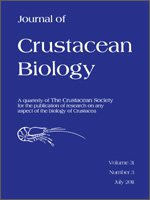I reviewed the penaeid literature for characters ‘traditionally’ used to discriminate Litopenaeus setiferus, Farfantepenaeus aztecus, and F. duorarum and examined early life stages (ELS) with 3 0 to 8 2 rostral teeth based on these characters. The species identity of most of the specimens examined were verified ‘a priori’ with a multiplex PCR assay that targeted the 16S rRNA mitochondrial gene. My objectives were to re-evaluate ‘traditional’ characters by re-examining ELS for differences in morphology and timing of character development based on number of rostral teeth rather than body size, and, to identify a reliable suite(s) of characters to discriminate taxa in areas where distributions overlap. I found the absence of spinules along the dorsal carina of the sixth pleomere in young with < 4 dorsal teeth (DT), and the supposed difference in length of the third pereopod relative to the distal margin of the eye to be unreliable characters for generic discrimination. Differences in the thoracic sternal spine pattern, rostrum depth at the third DT, and relative lengths of segment one of the inner and outer antennular flagellum are ‘new’ characters for genus and/or species level discrimination discussed here. Differences in antennal scale shape and sixth pleomere length can help discriminate F. aztecus from F. duorarum, but these characters should be used cautiously in areas where distributions overlap, especially during summer and early fall when water temperatures and rates of growth and development are high. Young with ≤ 7 − 8 1 teeth and a sixth pleomere length > 2.5 mm can be assigned to F. aztecus, regardless of collection date, because all comparably developed F. duorarum and L. setiferus examined had a sixth pleomere length < 2.5 mm. Given temporal and species-specific differences in rates of growth and development that contribute to morphological variability, number of rostral teeth provides a more consistent criterion than body size to determine which characters reliably discriminate taxa.
How to translate text using browser tools
1 July 2011
Young of Litopenaeus setiferus, Farfantepenaeus aztecus and F. duorarum (Decapoda: Penaeidae): a Re-Assessment of Characters for Species Discrimination and Their Variability
James G. Ditty
ACCESS THE FULL ARTICLE
It is not available for individual sale.
This article is only available to subscribers.
It is not available for individual sale.
It is not available for individual sale.

Journal of Crustacean Biology
Vol. 31 • No. 3
July 2011
Vol. 31 • No. 3
July 2011
antennal scale
antennular flagella
Farfantepenaeus
Litopenaeus
rostrum
spinules
sternal spines




